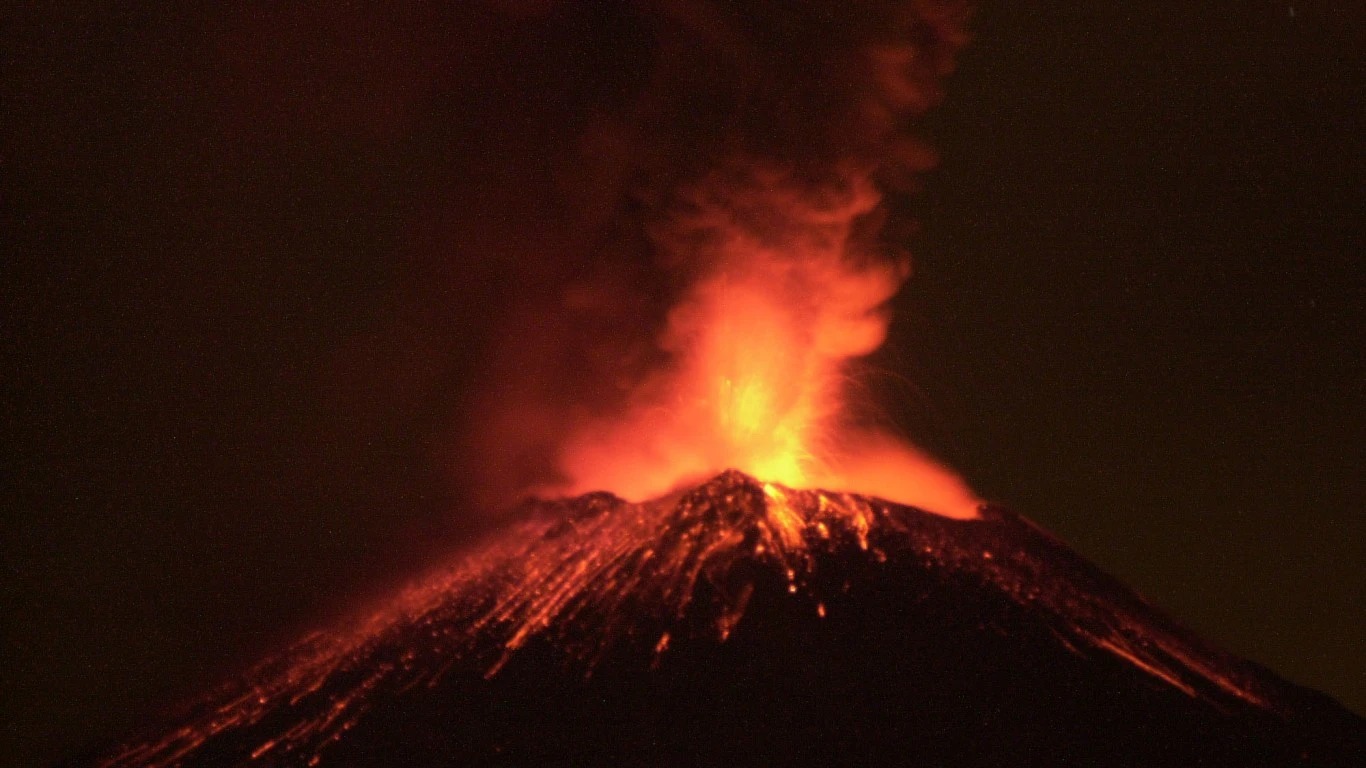
Mauna Loa, on the Big Island of Hawaii – the largest active volcano on earth – recently erupted for the first time in nearly 40 years. The volcano had been showing signs of activity since September. Luckily, the location of the lava flow currently poses no threat to nearby communities. (Not all eruptions are so innocuous. Here are the most devastating volcanic eruptions in history.)
Although Mauna Loa measures 30,085 feet from its underwater base, only 13,680 feet of this massive mountain rise above sea level. This means that despite its size, its summit is nowhere near as high as the tallest volcanoes on earth when measured from sea level. For example, Mauna Loa’s peak is nearly 9,000 feet lower than that of the Andean mountain Ojos del Salado, which is the tallest volcano on earth when measured from sea level.
To compile a selection of 13 of the tallest volcanoes on the planet, 24/7 Tempo reviewed a list created by Statista, a consumer data site, and ESRI, a geographic information system software company, as well as information from Geology.com and the United States Geological Survey. The list is representative, not exhaustive. Heights are measurements above sea level.
Click here to see 13 of the tallest volcanoes in the world
There are 20 volcanoes on earth with summits that exceed 20,000 feet, all in the Andes. Created around 50 million years ago by a collision of two tectonic plates, this emblematic South American mountain range is known for its dramatic peaks and volcanic activity. The only mountains higher than the Andes are the Himalayas, which lack volcanic activity. (Here are the tallest mountains in the world.)
While the tallest volcanoes are all in the Andes, there are volcanoes over 10,000 feet high on every continent, whether they are active, dormant (potentially active), or extinct. While the tallest volcanoes in the United States are in the Hawaiian islands, there are also volcanoes in Alaska and the continental U.S., some still active. Here are the most dangerous volcanoes in the United States.





